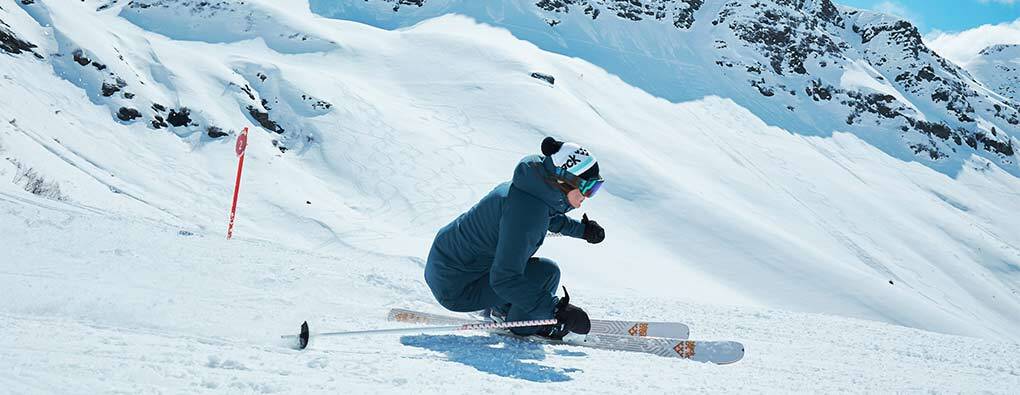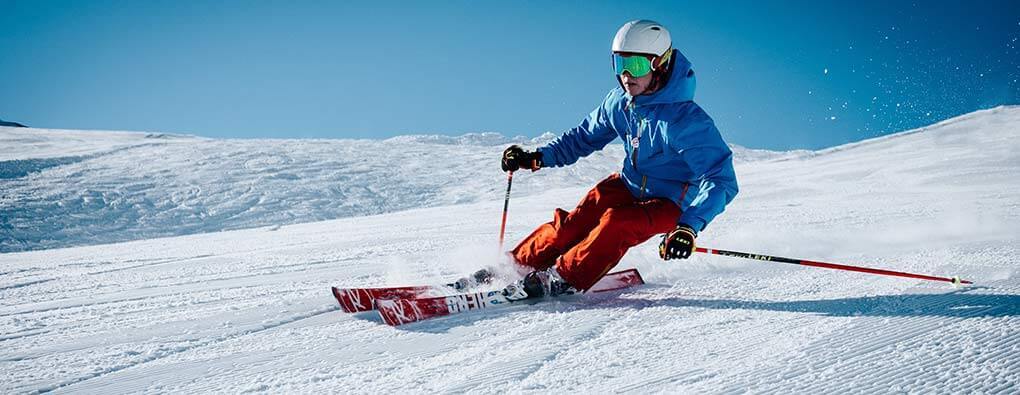Purchasing Skis for Newcomers
New to skiing and looking to buy your first skis? This guide provides helpful advice to steer you in the right path. We’ll cover the basics of selecting the right type of skis, finding the correct length, and understanding ski width.
Prior to making a final choice, it’s crucial to look for skis suited for beginners. These skis are built to be more forgiving and manageable. They typically come with bindings that adjust in size and are straightforward to use.
Owning your skis helps you adjust to their feel, a key benefit compared to renting.
PISTE SKIS - Optimal Carving Skis for Groomed Runs
Piste skis are specifically crafted for on-piste skiing. Beginners typically stick to these areas to learn fundamental skills, making Piste skis a superb choice. As you progress, Piste skis remain competent, helping you advance to more demanding slopes. Their narrow design improves snow grip.
ALL MOUNTAIN SKIS - The Premier All-Purpose Skis

All Mountain skis are versatile, handling a variety of conditions. They excel on-piste yet can navigate off-piste terrain. If you’ve skied before and wish for skis beyond just on-piste use, consider All Mountain skis. Their narrow to average width balances firm snow traction on-piste with off-piste adaptability on soft and uneven snow.
SPECIALIZED SKIS
Other specialized skis include Park, Racing, Freeride, and Touring types, usually for more seasoned skiers. If you're interested, take a look at our Guide for Experienced Skiers for more details.
Selecting the Suitable Ski Length
Your height and experience level dictate your ski length choice. For beginners, skis should reach about nose height. Each model offers different lengths, so select one within 3 cm above or below this measurement.
For less experienced skiers, shorter skis are recommended due to easier control, which aids in the learning process.
Your weight further influences ski size. For those significantly lighter or heavier than average, adjust the length: heavier individuals may need longer skis, while lighter ones might opt for shorter skis.
Illustration of ski length recommendations for beginner skiers
| All Mountain/Piste Skis | |
| First-timer | your height -20 cm |
| Beginner | your height -15 cm |
| Intermediate | your height -10 cm |
| Advanced | your height -5 cm |
| Expert | your height |
Ski Width Explained
Ski width influences performance on various terrains. Narrow skis suit hard snow, while wide skis are for softer snow. Width is typically expressed in three measurements: tip - waist - tail.
The waist number provides the most insight and is always the middle figure. Example: 132/78/113
You’ll find these dimensions mentioned in our ski specifications online.
For mainly on-piste skiing, waist widths of 70 to 82mm are ideal as they offer superior firm snow grip, perfect for beginners.
Additional Ski Gear
Ski Boots
Ski boots might be your most crucial purchase for a ski trip. Check out our Ski Boot Purchasing Guide for detailed information, but here are some basics to get you going.
Sizes are noted in centimetres, specifying the foot length from heel to toe. Measure your foot for an exact size. Each set of boots also features a flex rating, indicating shell flexibility. Beginners should seek out more flexible boots (Flex 60-90) for comfort. Refer to the Boot Flex Guide for recommended flex ratings.
Tip: Are your ski boots uncomfortable? Avoid tucking ski pants inside boots. Only your foot and a tall ski sock should be in the boot. High-quality ski socks can prevent blisters, discomfort, and chilly toes.
Ski Poles
Poles offer support on flat surfaces and enhance balance. A plastic disc at the pole’s bottom prevents sinking into snow. Use the Pole Length Chart to find the appropriate length based on your height.
Helmets
Today, most skiers, regardless of skill, wear helmets. They provide warmth and vital head protection. Unlike bike or skate helmets, ski helmets are built to endure multiple impacts, making them irreplaceable.
For further reading, see Helmet Use or Helmet Shelf Life.
Goggles
Goggles significantly enhance your skiing experience by protecting your eyes from sunlight, wind, and snow while improving visibility. Learn more in our Comprehensive Ski and Snowboard Goggles Guide.



